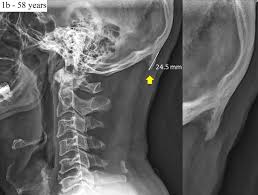Jun 21 2019
People Growing Horns? – More Bad Science Reporting
 One type of bad science reporting that is very common is reporting the speculation at the end of a study as if it were the finding of the study. For example, the Washington Post headline was, “Horns are growing on young people’s skulls. Phone use is to blame, research suggests.” The research, you may be surprised to learn, had nothing to do with phone use. “Horns” is also a stretch.
One type of bad science reporting that is very common is reporting the speculation at the end of a study as if it were the finding of the study. For example, the Washington Post headline was, “Horns are growing on young people’s skulls. Phone use is to blame, research suggests.” The research, you may be surprised to learn, had nothing to do with phone use. “Horns” is also a stretch.
When I see headlines like that my first questions is always – what did the research actually show? What was the data? In this case the researchers were looking at X-rays of the skull, and particularly at the occipital protuberances. This is a pair of bumps at the back of the head where the posterior neck muscles insert. They found that the risk of having bony spurs or calcifications in the ligaments attaching to the skull (not horns) increased in men, with forward tilt of the head, and in younger subjects. That’s the data. Everything else is the authors speculation about what these results mean.
They argue that the bone spurs are partly a result of the mechanical load on the back of the skull, largely from tilting the head forward. This is reasonable and backed up by some prior research. But the study did not measure phone use. That is pure speculation. It belongs nowhere in the bottom-line headline reporting on the study. Further, a recent systematic review found no clear evidence for increased neck symptoms in mobile phone use. There are many possible factors at work here. Saying that men has slightly more risk than women because men use mobile phones more is a really weak argument. There are many differences that could account for the disparity.
It’s not even clear that mobile phone use has really changed how much we tilt our heads forward. Reading and working can also involve looking down.
I also have to point out that the study itself has come under question for quality. As The Guardian reports:
The study also had some worrying problems. As a number of people on Twitter pointed out, the data in the study directly contradicted itself, showing in a graph that men had fewer enlarged EOPs than women but saying in the text that they had more. There were also a number of minor numerical errors – calling the young group 18-29s in one place and 18-30s in another – and a somewhat problematic method of sampling. In fact, the top comment on the paper in the online journal asks how it got through peer-review in the first place, implying that it probably shouldn’t have been published at all. While all of these errors may not be the fault of the authors – the journal editors might be to blame – it makes it much harder to trust the results as reported.
These may just be sloppy errors, but I agree that warrants at least a second look at the rigor of the study. But as I said – even if the data are essentially correct, they tell us nothing about phone use. But of course, the clickbait headline triggers off the reaction – “These kids today, with their phones.” Fear of how modern technology is changing us or causing problems will fuel many such headlines.
At least this news item has had a rapid cycle. The backlash against the clickbait, like that from The Guardian, or this one from Gizmodo, came out pretty quickly. Hopefully that will trigger some warranted skepticism.






